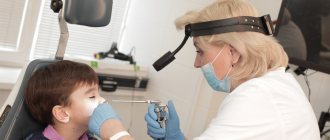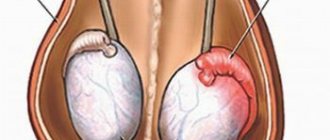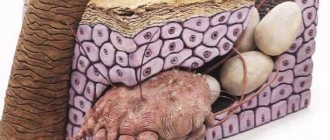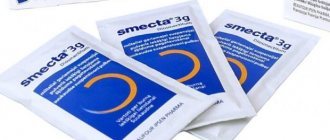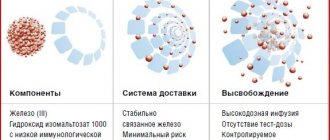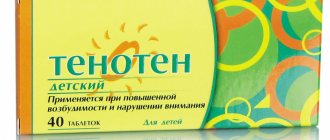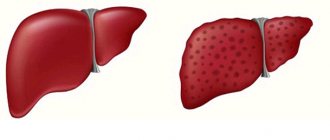10% of patients consult dermatologists with complaints of symptoms of contact dermatitis.[1] They appear in response to the body's immune system to the influence of external irritating factors. It can be:
- detergents;
- dyes;
- decorative cosmetics and perfumes;
- some metals;
- household chemicals, etc.
1-3% of dermatitis are associated with allergies to these substances. Since women come into contact with them more often, they are more susceptible to these diseases[2]. In addition, symptoms of dermatitis are observed in adults who work in chemical production, medicine, hairdressing, as well as in representatives of other professions who have to deal with irritants. According to statistics, 7% of occupational diseases are allergic contact dermatitis[1]. There is another type of this skin pathology – simple contact dermatitis. Both diseases develop according to a similar mechanism, but also have some differences in the course, and therefore require a different approach to treatment. Regardless of what disease the patient suffers from, simple contact or allergic dermatitis, he is prescribed external local remedies in the form of ointments or creams. The type of agent used in treatment is selected depending on the form of the disease (acute or chronic), the severity of the course, as well as the individual characteristics of the patient.
Mechanism and causes of occurrence
The intensity of development and severity of dermatitis symptoms depend on two factors: the activity of the immune system and the strength of the irritant. Thus, the disease can manifest itself after a single interaction with a harmful substance, if it was too aggressive. If the irritant is weak, signs of dermatitis will appear after quite a long contact with it. However, if the human body is very sensitive, an allergic reaction will occur immediately, regardless of the concentration of the irritant.
Based on the body's reaction, you can determine whether the disease is simple contact or allergic dermatitis. If signs appear immediately, limited only to the site of contact with a chemical or physical irritant (friction or scratches), but no other allergy symptoms are observed, we are talking about simple contact dermatitis.[2] Allergic skin disease develops as a result of increased sensitivity of the immune system to a specific pathogen. Contact with it leads to an inflammatory process that extends beyond the affected area. Lesions of the skin or mucous membranes in allergic dermatitis can occur anywhere, since the concentration of the irritant and its route of entry into the body do not play a significant role.[3].
Simple contact dermatitis occurs when interacting with certain substances, as well as under the influence of certain physical factors, such as overheating, compression, squeezing and various injuries to the skin. Most often the disease develops due to:
- kerosene;
- phenol;
- lime;
- acids;
- organic solvents;
- various oils[2].
Not every substance can be an allergen; there are several groups of materials that can cause an allergic reaction in dermatitis. This:
- low molecular weight chemical compounds, metal ions that can penetrate the body through the skin - aluminum, cobalt, chromium and others;
- some medications, both local and for oral administration - antibiotics, anesthetics, agents containing formaldehyde, steroid drugs;
- cosmetics, perfumes and hair dyes that contain alcohol, preservatives and fats;
- rubber products and glue. [3].
In addition, there are plants, contact with which can trigger the development of allergic contact dermatitis. These include representatives of the Asteraceae family - chrysanthemum, poison ivy, primrose and others.
Chatterbox
Prepare a semi-alcohol solution: to do this, dilute 40 ml of alcohol with the same volume of water. Add 2 ml of 2% lidocaine or novocaine to the resulting solution - this will help relieve the painful symptom.
Add 30 g of dry white clay and the same amount of powdered zinc. Mix thoroughly until smooth.
The finished mash is applied to the affected skin, previously cleaned with an antiseptic, in a thin layer, the mixture is left on the skin for 20 minutes. There is no need to apply a bandage on top; excess talker can be carefully removed, and the remaining part on the skin forms a protective film.
Remember! Do not self-medicate, consult a doctor!
Cutaneous dermatitis is a general name for skin disorders caused by various irritants. All irritants can be divided into 2 large groups: those that cause irritation upon direct contact and those that affect the body when they get inside.
Sources:
- Molochkova Yulia Vladimirovna, Dermatology. Brief reference book, publishing house: GEOTAR-Media, 2017
- Baumann Leslie, Cosmetic Dermatology. Principles and practice, publishing house: MEDpress-inform, 2016
- Ratner Desiri, Avram M.R., Avram M.M., Procedures in Dermatology. Clinical cosmetology, Publishing house: GEOTAR-Media, 2019
- Sukolin Gennady Ivanovich, Clinical dermatology. A short guide to the diagnosis and treatment of dermatoses, publishing house: Notabene, 2017
Photos of dermatitis
Symptoms and signs of the disease
As a rule, at the initial stage the signs of one or another dermatitis are the same. Redness occurs on the surface of the skin, followed by rashes, swelling, dryness and cracks. They often itch, and patients also often complain of a burning sensation and pain in the affected area. Manifestations of contact skin pathology are usually less pronounced, while the allergic form is characterized by more severe redness and swelling. Often liquid-filled blisters appear on the affected area. If they are damaged or burst, this can lead to the formation of large, weeping lesions, which can be accompanied by a secondary infection. In this case, the sites of inflammation will begin to fester, which will lead to a more severe course of the disease and its progression to a chronic form.
A clear symptom of an allergic reaction is skin lesions not only at the site of contact with the irritant, but also on other surfaces. The skin most often exposed to pathogens is the skin of the hands, face, neck, shoulders, collarbones, armpits and scalp. Allergic dermatitis rarely affects the lower limbs and torso.[3].
Treatment of simple contact and allergic dermatitis
Treatment can only be prescribed by a specialist dermatologist after a preliminary consultation and examination of the patient. Depending on the type of skin pathology, the patient may be referred to an allergist, who will study the medical history and assess the nature and extent of the lesion. This is necessary in order to determine the allergen that provoked the disease, since treatment is primarily aimed at partial or even complete elimination of the provoking substance.
Therapy used for dermatoses is divided into supportive and medicinal. The first includes cold compresses, bandages, and antihistamines. Drug treatment is carried out mainly with external topical glucocorticosteroids in the form of ointments and creams.[4] Such drugs have a versatile effect on the source of inflammation, therefore they are the most popular drugs with wide application possibilities.[5] Akriderm preparations are also local glucocorticosteroids.
Diet
Diet is very important for the prevention of dermatitis and their treatment in both adults and children. Foods that provoke allergies should be excluded from the menu: citrus fruits, nuts, red fish, eggs, chocolate, honey. It is recommended to limit irritating foods as much as possible - spices, vinegar, salty, spicy and smoked foods. Patients are advised to take light soups, low-fat foods, and fermented milk products. It is necessary to drink enough water.
For infants suffering from atopic dermatitis, it is advisable to continue breastfeeding. At the same time, the mother should exclude allergens from her food as much as possible. If breastfeeding is not possible, the child is prescribed special formulas with a minimum content of cow's milk protein. Complementary feeding is introduced to such children as late as possible, with extreme caution. Each new product and the reaction to it should be recorded in a food diary.
Article sources:
- Characteristics of seborrheic dermatitis. Shukurov I.B., Yakhshieva M.F., Rustamov M.K. Scientific journal, 2018
- Atopic dermatitis of adults. Dvoryankova E., Denisova E., Piruzyan A., Korsunskaya I. Doctor No. 3, 2021. p. 9-13
- Maintenance pharmacotherapy for atopic dermatitis. Petrova I.V., Omarov N.N., Sargsyan M.S., Khamroeva S.A., Osmanova Z.S., Proshin S.N. Reviews on clinical pharmacology and drug therapy, 2021. p. 60-63
Akriderm preparations for dermatoses
Akriderm ointments and creams are combination preparations that contain several active substances at once, which provide comprehensive treatment for dermatitis of allergic and non-allergic nature. They provide:
- antipruritic effect;
- anti-inflammatory effect;
- antiallergic effect;
- vasoconstrictor effect.[6]
This therapeutic effect was achieved thanks to a thoughtful combination of glucocorticosteroids with broad-spectrum antibiotics and antifungal components. Akriderm ointments and creams not only fight redness, itching and swelling, but also protect the skin from bacterial and fungal infections.
In the fight against contact dermatitis (simple and allergic), it is advisable to use the following Akriderm preparations:
- Akriderm SK ointment contains salicylic acid, due to which it acts quickly and has a favorable safety profile.
- Akriderm GENTA ointment is used for chronic skin pathologies, in particular those complicated by secondary infection.
- Ointment or cream "Akriderm GK" - used for acute and chronic inflammation to suppress unpleasant symptoms
- Ointment or cream "Akriderm" - thanks to the thoughtful concentration of active substances, can also be used for children over 1 year of age.[7]
links to sources
- Contact dermatitis - Clinical guidelines, Russian Society of Dermatovenereologists and Cosmetologists, 2021.
- Dikovitskaya I.G., Korsunskaya I.M., Nevozinskaya Z. Contact dermatitis: clinical picture and therapy // Sovrem. problems of dermatovenerology, immunology and medicine. cosmetology. 2010. T. 4. No. 4. pp. 49–51.
- Stepanova E.V. Allergic contact dermatitis: basic approaches to diagnosis, treatment and prevention // Attending physician. - 2009. - No. 10. - P. 15-19.
- Mercedes E. Gonzalez, “Contact dermatitis” MD, University of Miami Miller School of Medicine.
- Batyrshina S.V. Glucocorticosteroids for local use in the modern strategy for the treatment of inflammatory dermatoses in pediatric practice // Practical Medicine, 2014. No. 9 (85). pp. 94–102.
- Federal clinical guidelines. Dermatovenereology 2015: Skin diseases. Sexually transmitted infections. – 5th ed., revised. and additional – M.: Business Express, 2021. – 768 p. 3. Instructions for use of the medicinal product for medical use Akriderm®. No. Reg. beat LS-002317, R N000663/01.
- Instructions for medical use Akriderm®
Ointment "La-Cri" - a reliable assistant
To care for affected skin, either alone or in combination with ongoing therapy, we recommend using La Cree cream. This is a non-hormonal product that does not contain dyes or fragrances, and therefore is suitable even for newborns, nursing and pregnant women.
The natural composition of the cream is selected in such a way as to simultaneously solve all the problems of irritated skin. The product perfectly relieves redness and itching, promotes rapid regeneration of damaged skin, nourishes and softens even very dry and flaky skin.
As an auxiliary product, you can use the non-greasy emulsion “La-Cri”, which provides gentle care for the skin, moisturizing it and protecting it from drying out. Treatment of dermatitis on the face will be faster with La-Cri washing gel, which gently cleanses delicate skin without clogging pores.
Experts' opinion
The conducted clinical study proves the high efficiency, safety and tolerability of products for daily skin care of children with mild and moderate forms of atopic dermatitis and during remission, accompanied by a decrease in the quality of life of patients. As a result of therapy, a decrease in the activity of the inflammatory process, a decrease in dryness, itching and flaking was noted.
The products are recommended by the St. Petersburg branch of the Union of Pediatricians of Russia.
It has been empirically proven that La Cree emulsion moisturizes and nourishes the skin, relieves itching and irritation, and also soothes and restores the skin.
